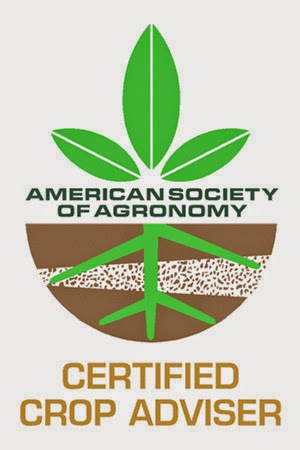When the field conditions are less than ideal for seeding of winter wheat in the fall, some Idaho growers consider delaying the winter wheat seeding until early spring.
Winter wheat (Triticum aestivum)
Cold acclimation and vernalization
Winter wheat undergoes two important physiological changes in the fall when the plants are exposed to cooler growing conditions, namely cold acclimation and vernalization. Cold acclimation is needed to induce the winter hardiness that allows the plant to survive the freezing temperatures during the winter months. Vernalization enables reproductive growth and allows winter wheat to reach flowering earlier the next summer. Both vernalization and cold acclimation require a period of growth when temperatures are between 30° and 60°F, with near 40°F being optimum. If the vernalization requirement is only partially met in the fall because of late planting, it will result in a delay in maturity the next summer, as reproductive growth will eventually be triggered by day length. The period needed for vernalization differs among winter wheat varieties. Likewise, the winter hardiness differs among winter wheat varieties. The most winter hardy varieties can withstand crown temperatures as low as -15°F for a short period of time (table below)| Temperature (F°) | Maximum Length (days) |
| 27 | 150 |
| 5 | 6 |
| -15 | 0.5 |
| -20 | 0 |
(Winter Wheat Production in North Dakota NDSU Extension Service)
Robertson, Guy, and Brown's publication -
Southern Idaho Dryland Winter Wheat Production Guide.
SUMMARY OF BASIC RECOMMENDATIONS:
• Winter wheat production can be improved and input costs reduced with good knowledge of growth and development. Learn to recognize the various growth stages and the impact of various management inputs.
• Make an annual production management and marketing plan prior to beginning the crop season.
• Minimize the number and intensity of tillage operations before and after winter wheat crops to control soil erosion, reduce water loss and soil compaction, and improve soil productivity.
• Use rotations and cultural practices to minimize weed, disease, and insect problems, and reduce chemical
use.
• Choose varieties carefully with appropriate disease resistance, maturity, and quality characteristics for the intended use.
• Prepare seedbeds carefully to conserve adequate moisture for germination and emergence, and to ensure good seed-soil contact. Seed at the proper time, depth, and rate for the chosen variety.
• Use only high quality seed. Plant certified seed to ensure seed purity and viability.
• Soil test to determine nutrient needs. Apply only the amounts of nutrients needed and at the proper time to avoid nutrient loss, wasted inputs, and environmental contamination.
• Control weeds, insects, and diseases through variety choice, timely scouting, and application of the correct pesticides at the correct time and rate.
• Plan ahead for storage and marketing needs. Become familiar with alternative marketing options.
• Adjust combine properly to reduce kernel damage and dockage.
• Store the crop in clean, insect-free bins, and check frequently for developing trouble spots.
• Manage residues properly to avoid problem chaff rows and to conserve soil and moisture.
• Use a systems approach to combine the best management options into an integrated crop production and marketing system. Use enterprise budgets to evaluate options and track progress.
If early spring seeding of winter wheat is considered, cultivars with shorter (weaker) vernalization requirements should be chosen to ensure optimum heading (Table 1). Expected temperatures after planting also must be considered (see Planting Date section).
Advice from Bob Fanning, SDSU Extension Specialist:
If winter wheat planting gets delayed past November 1, producers should consider waiting until spring to plant spring wheat, or consider dormant planting spring wheat. Late planted winter wheat often matures later and yields less than dormant or early planted spring wheat. True dormant planting occurs when the seed is planted just before the ground freezes. Spring wheat that is properly dormant planted will lie in the soil as hard seed until the soil warms enough in the spring to begin germination, approximately 34-37° F. - See more at: http://igrow.org/agronomy/wheat/late-planting-winter-wheat/#sthash.gvsRIXIB.dpuf
The benefits of winter wheat include:
- A higher yield potential than spring wheat
- Greater profitability as it often requires less inputs than spring wheat
- More efficient use of labor and machinery as it is planted and harvested during periods with few competing field activities
- Establishment of a cover to reduce wind and water erosion
- Establishment of a cover for wildlife in fall and early spring (Jochum J. Wiersma, Small Grains Specialist, University of Minnesota Extension).






























